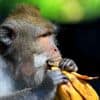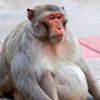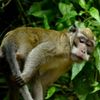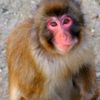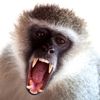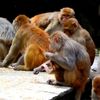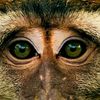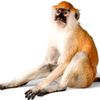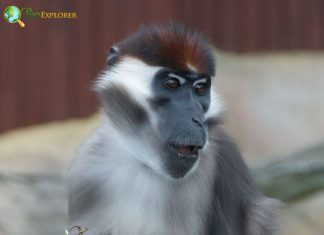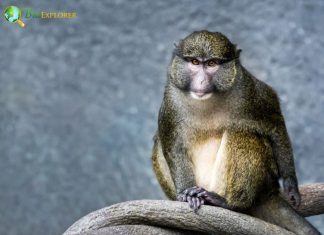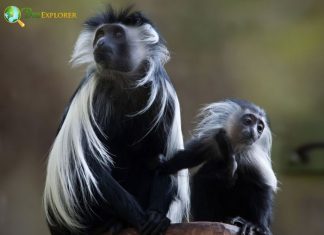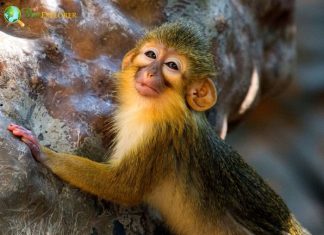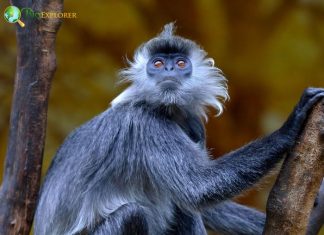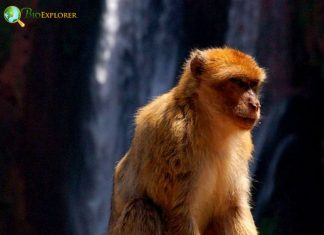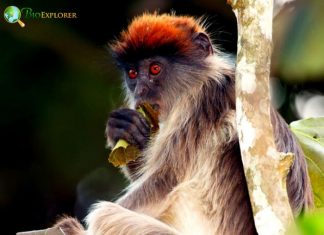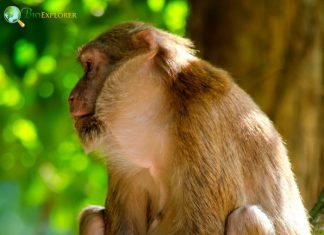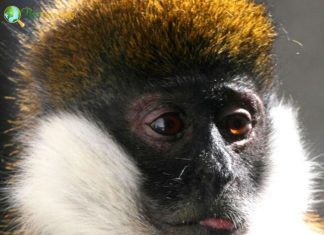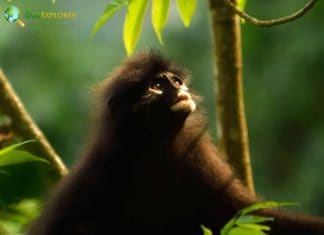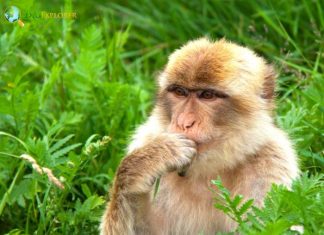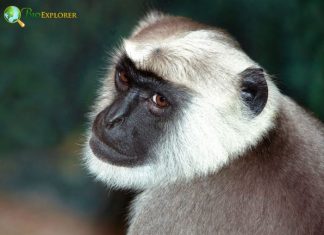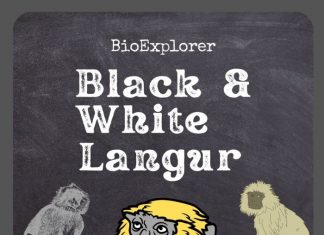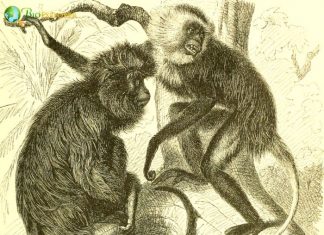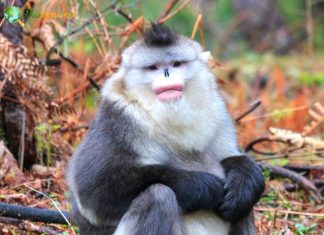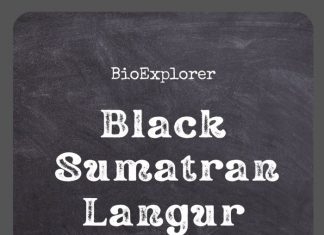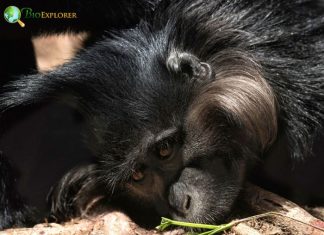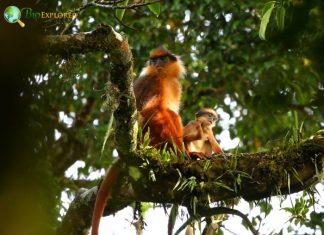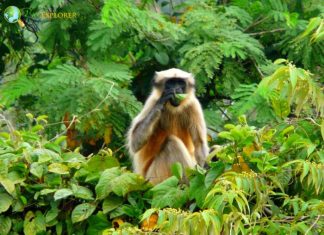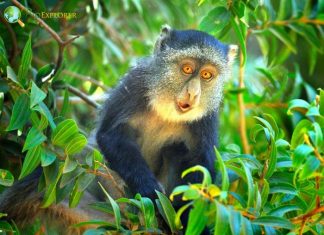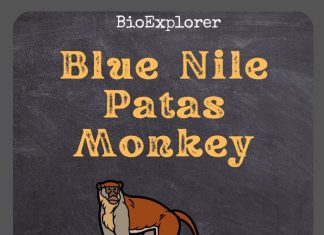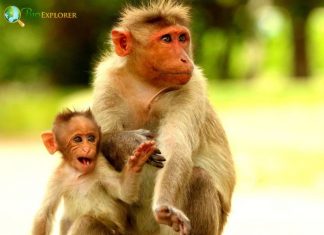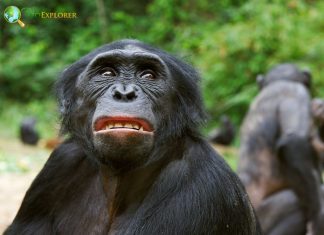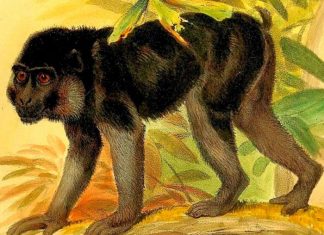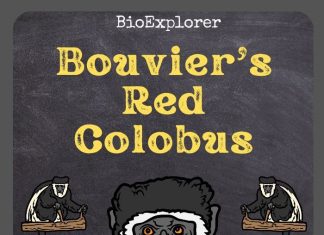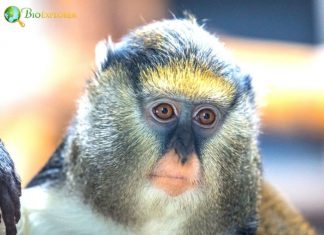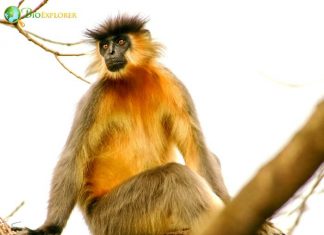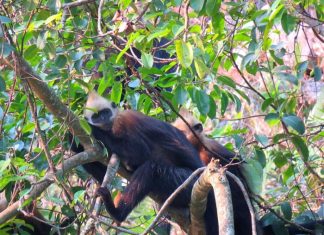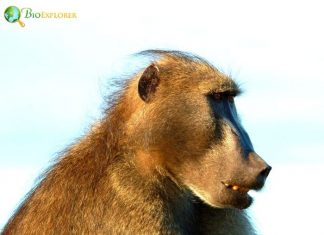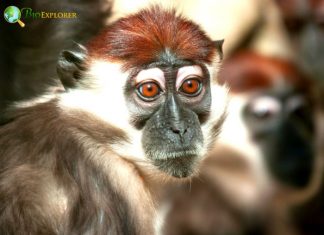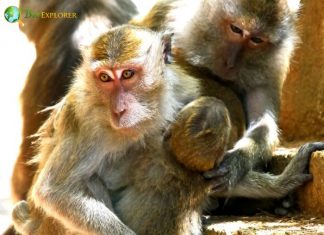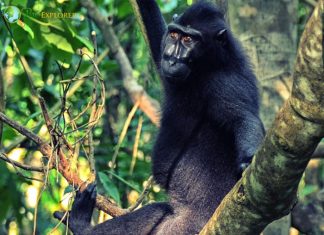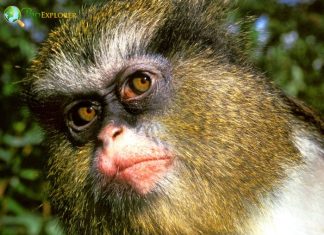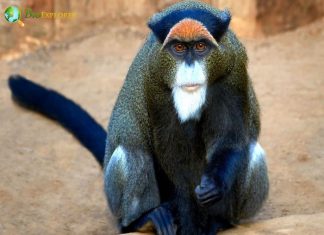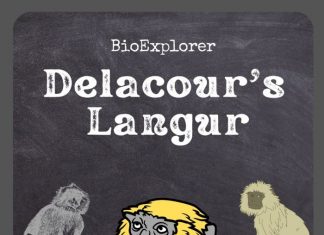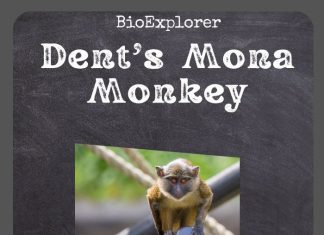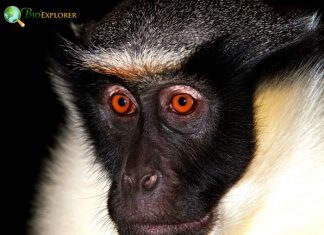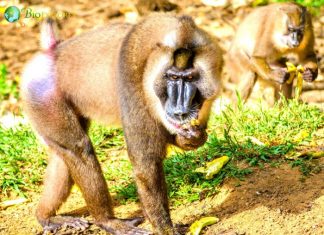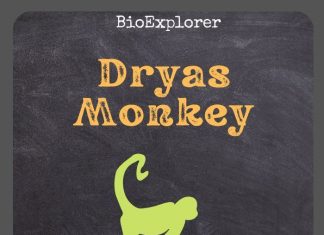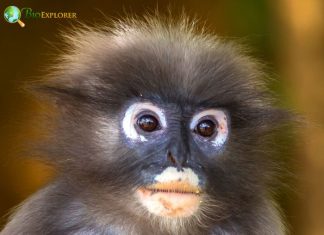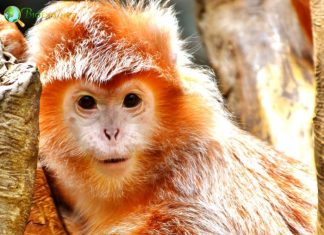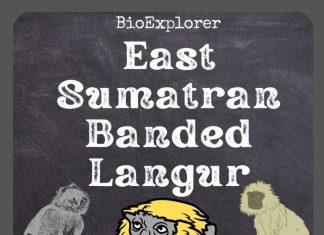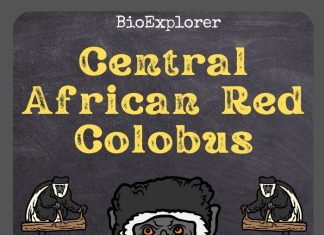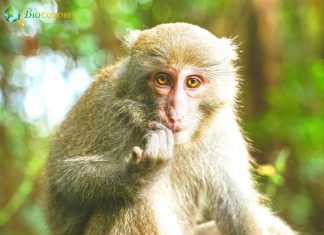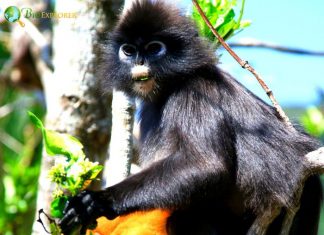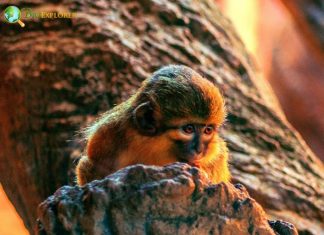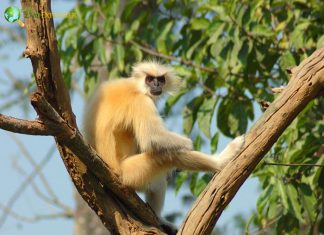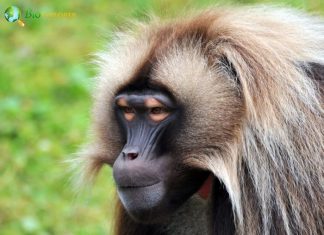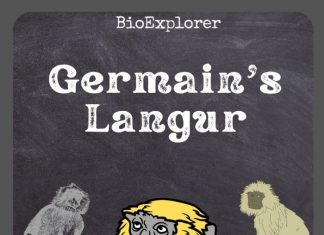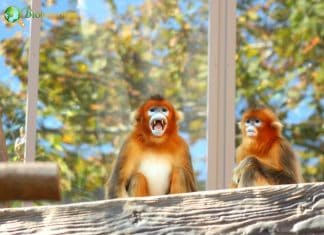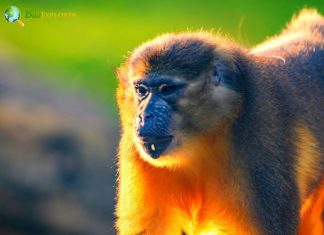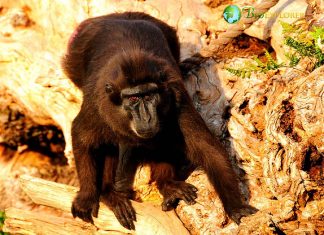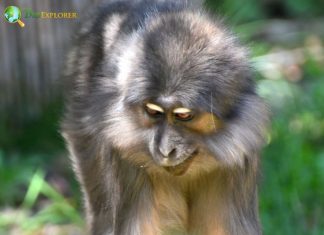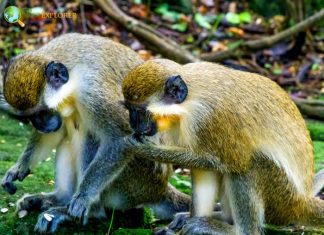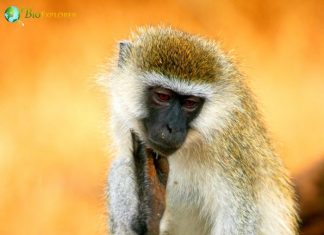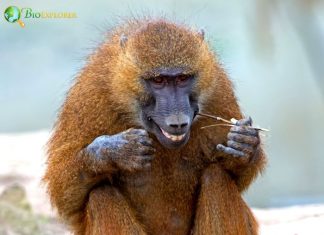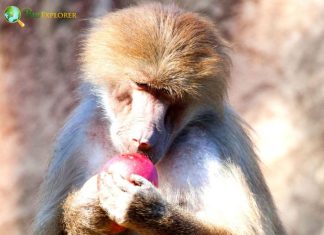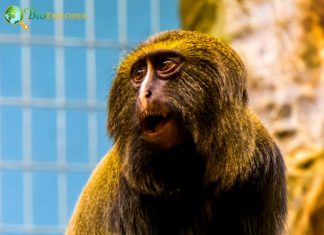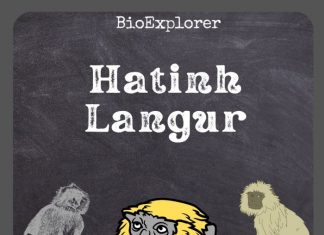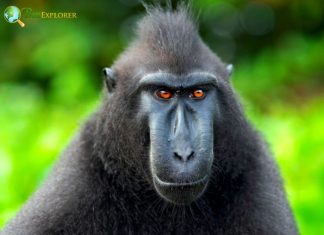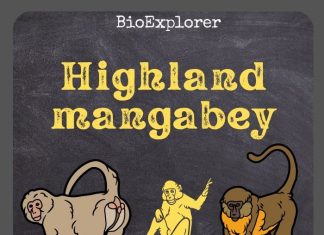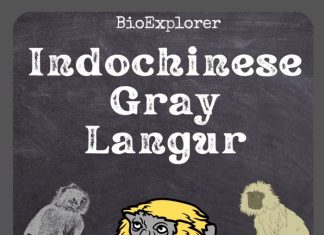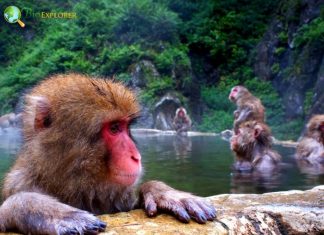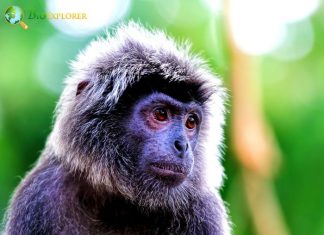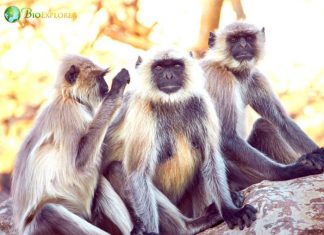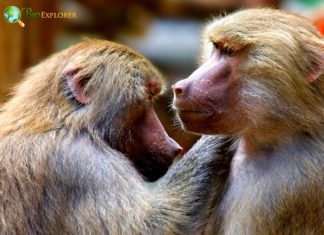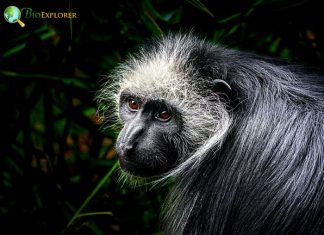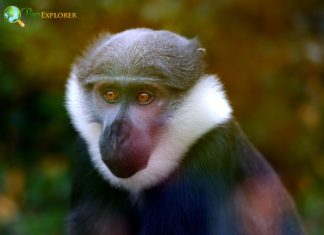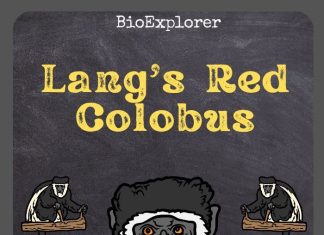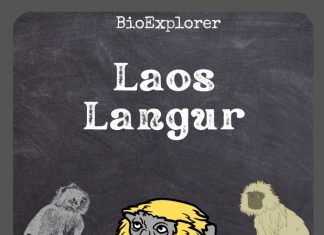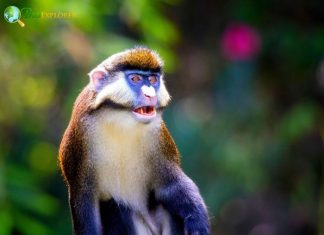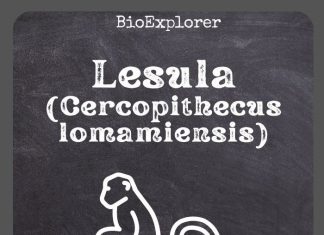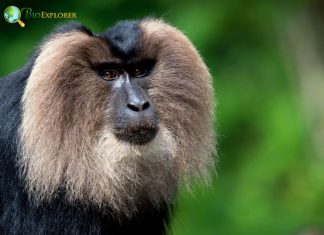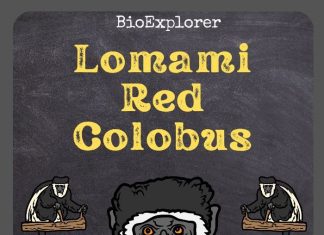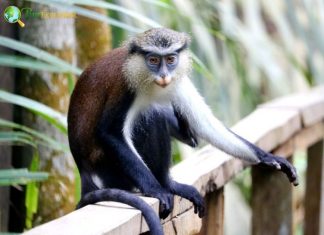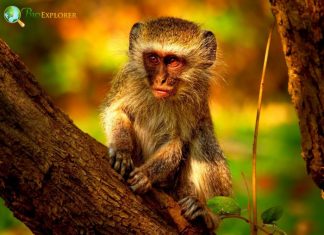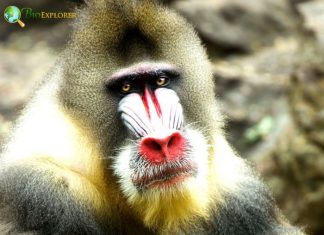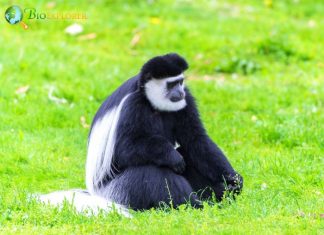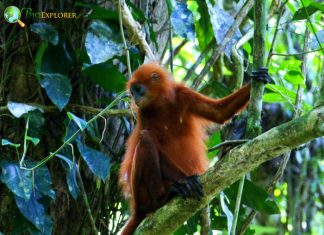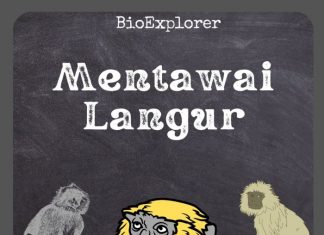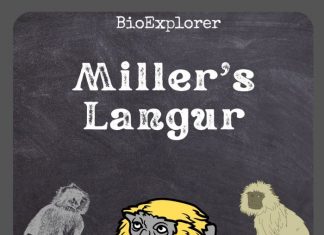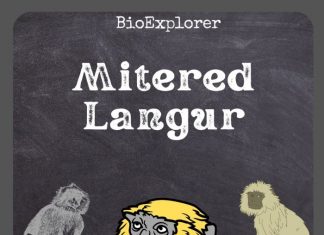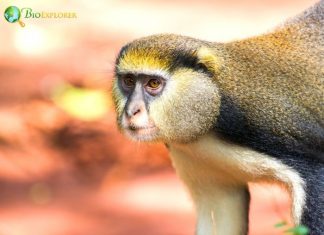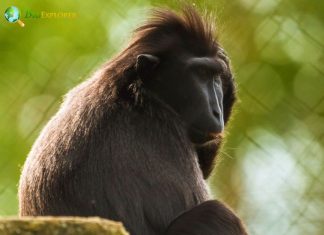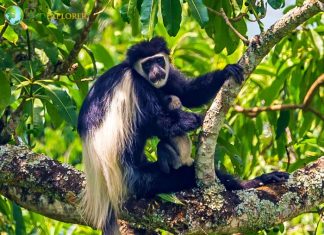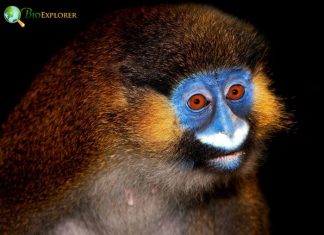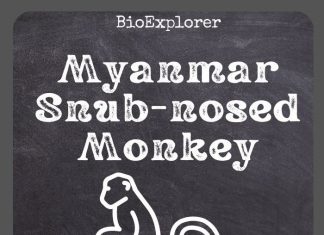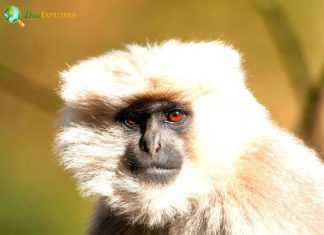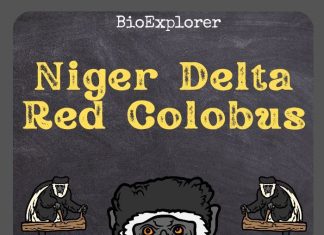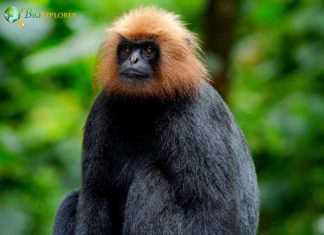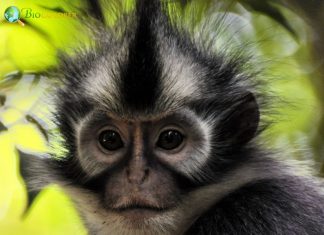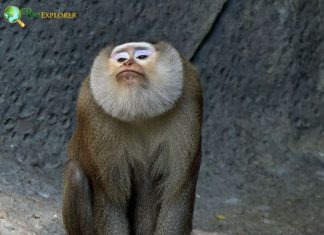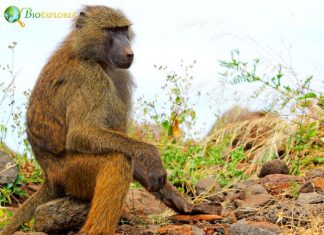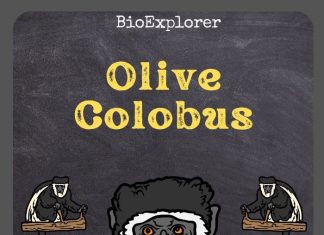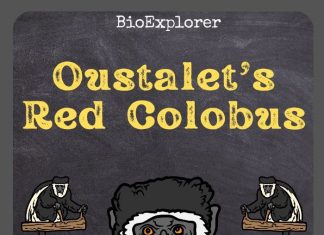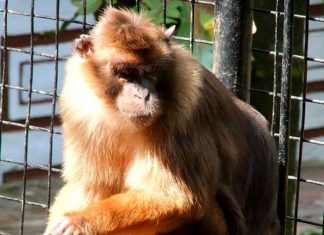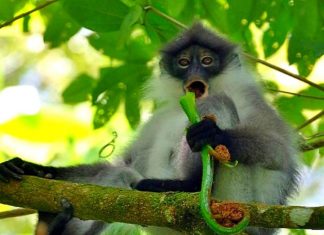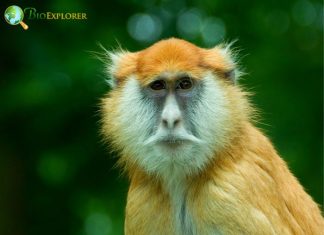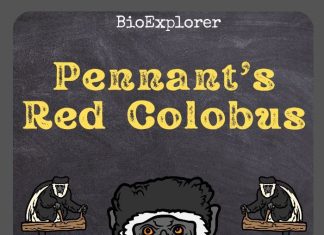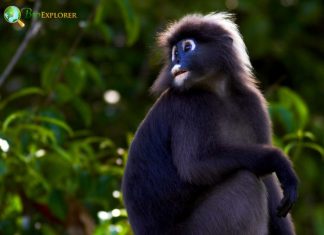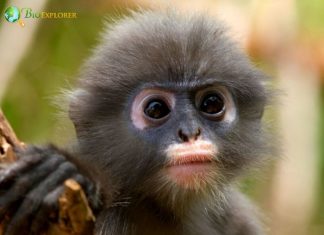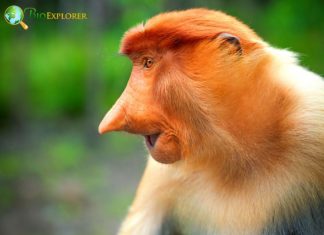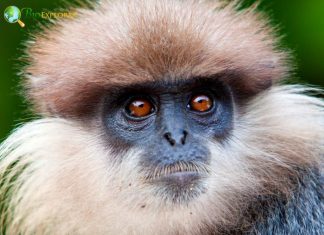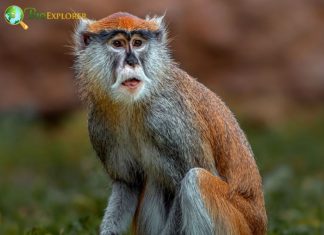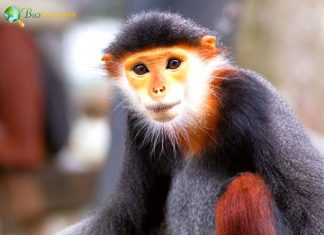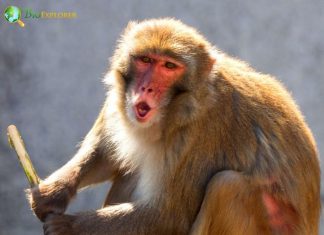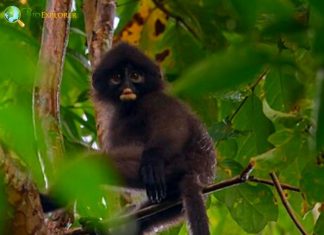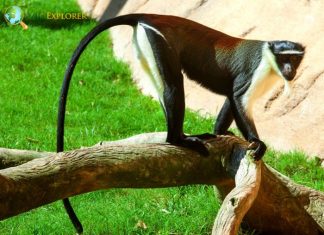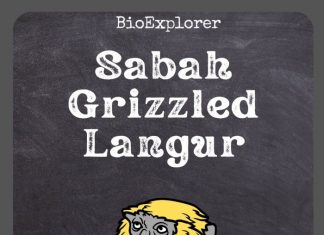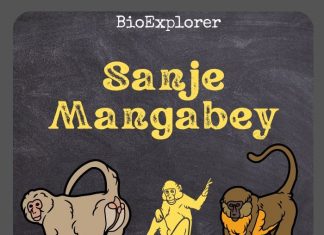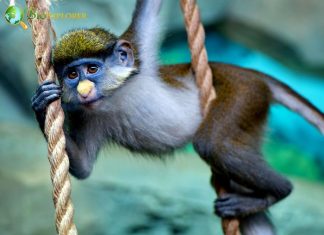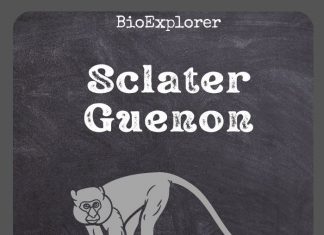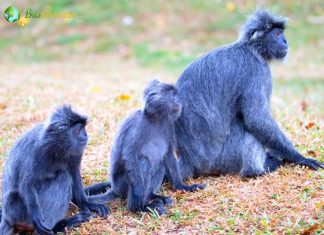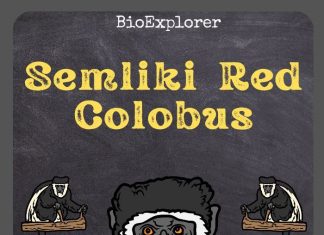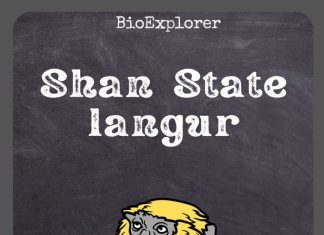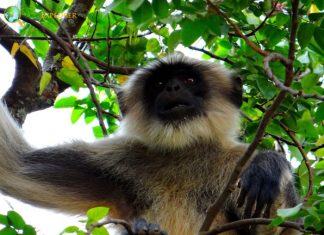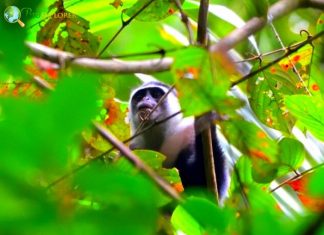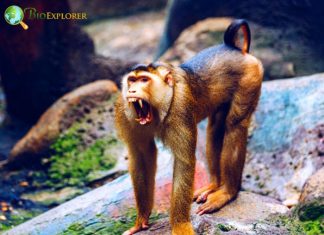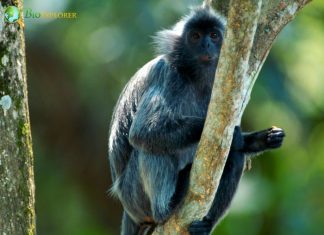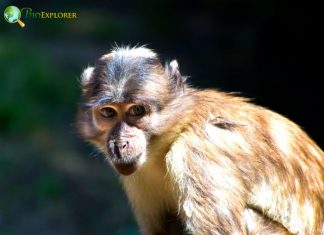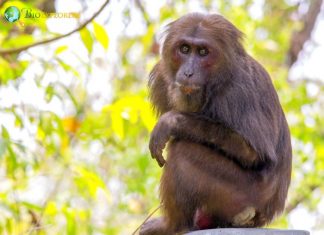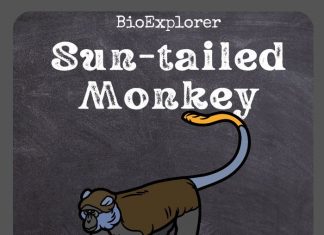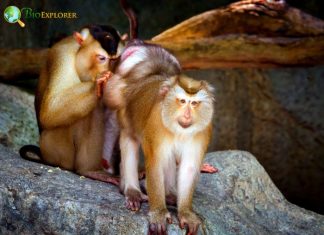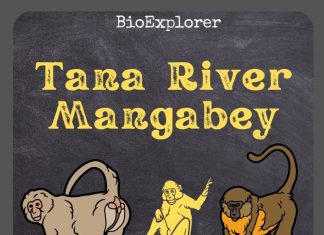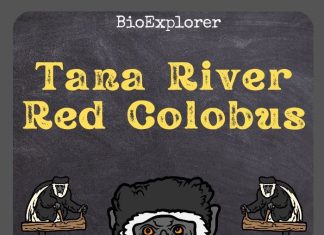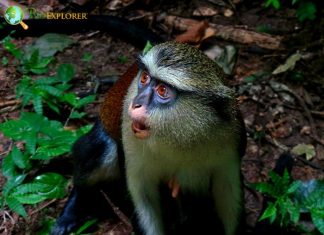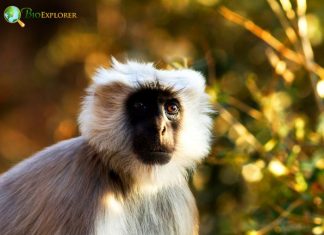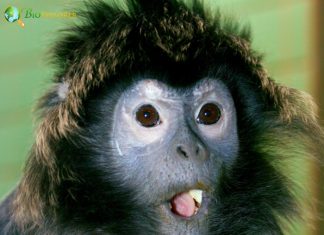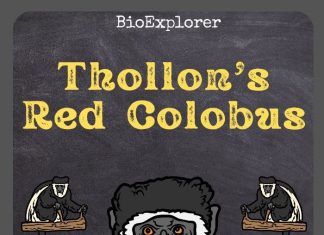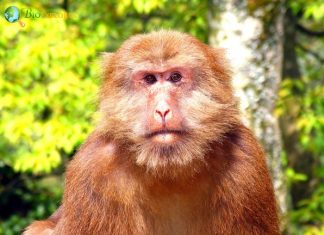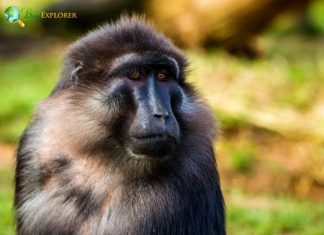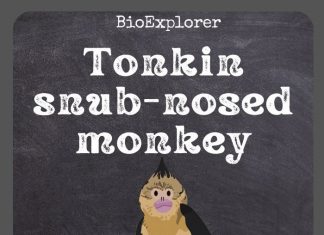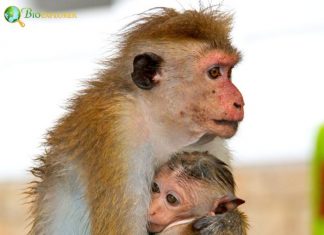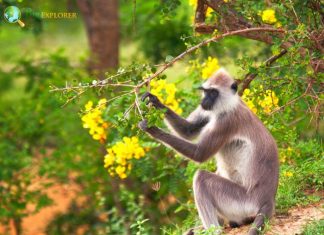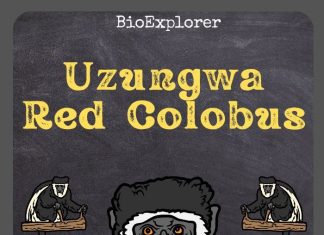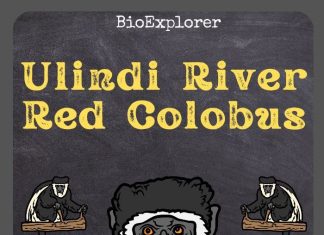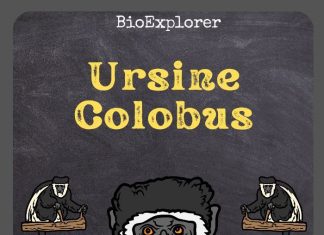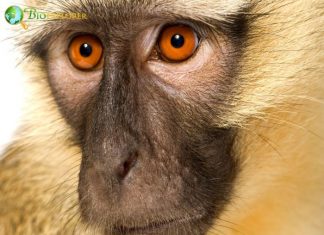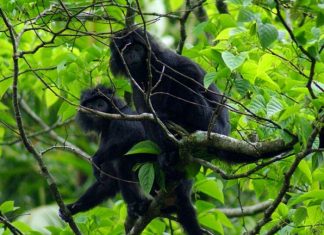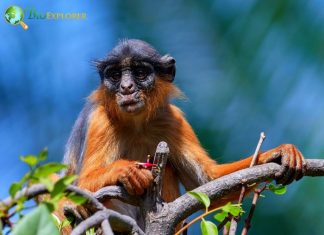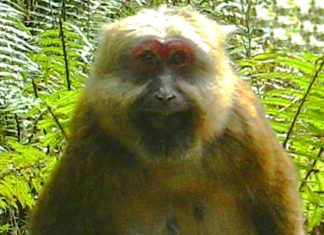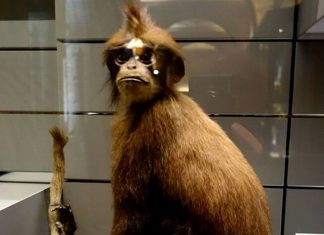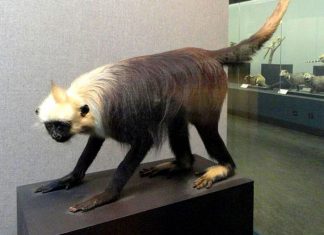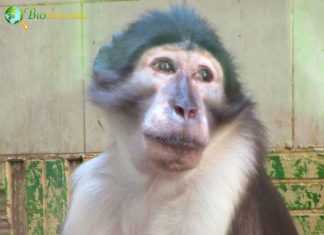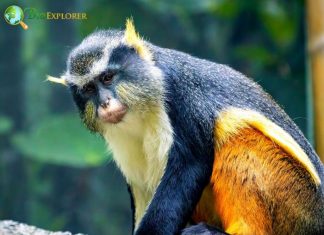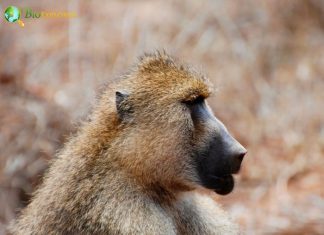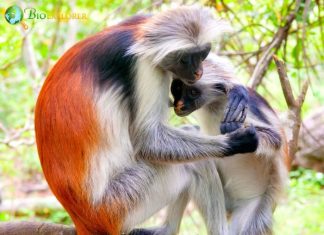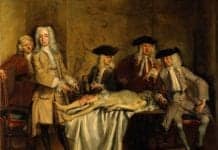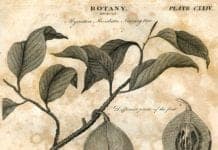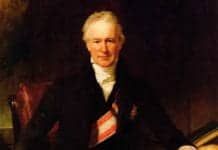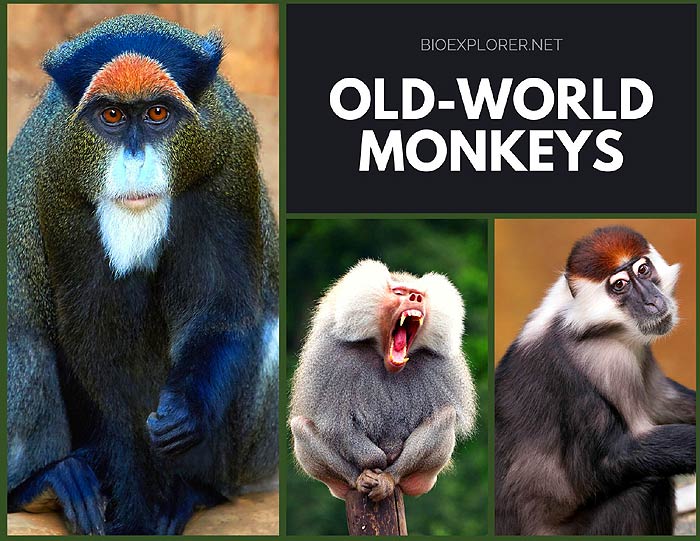
The term “Old World monkey” refers to the primates that make up the taxonomic family known as “Cercopithecidae“; they are mostly spread across Africa and Asia.
Cercopithecidae consists of 23 genera and 160 species and includes various types of monkeys such as baboons, macaques, colobuses, langurs, and more.
The family is split into two subfamilies: Cercopithecinae, which has 78 species, and Colobinae, which has 82 species.
Characteristics of Old-World Monkeys
Here are the main characteristics shared by Old World monkeys:

Diet
The majority of the species in the Cercopithecinae subfamily are omnivorous; although the specifics vary by species, they generally feed on foods like fruits, leaves, insects, small animals, eggs, and more[1]. On the other hand, all of the species of the Colobinae subfamily are herbivorous; their diets primarily consist of leaves and seeds [2].
Explore more on: What Do Monkeys Eat?

Gestation
Depending on the particular species, the gestation period of Old-World monkeys is usually around 5 to 7 months[3]. In most cases, these monkeys have one child per pregnancy; however, there is a small chance of double births occurring[3].

Tail
All Old-World monkeys have tails, though they are non-prehensile, meaning they cannot be used to hold or grasp objects[3]. It should also be noted that Old-World monkeys possess pads known as “ischial callosities” on both sides of their tail (on the rear)[4]. These pads of tissue can make sitting down on branches and other rough surfaces easier.

Body Size
Old-World monkeys are generally medium-to-large-sized. The smallest species are the northern and southern talapoin monkeys, typically weighing about 2 to 3 pounds[5]. On the other hand, the largest species is the mandrill-males generally weigh around 55 pounds once they reach adulthood[6]. It is quite common for male species of Old-World monkeys to be much larger than their female counterparts.

Teeth
All Old-World monkeys (as well as apes and humans) share the same dental formula of 2.1.2.3[7]. This essentially means that each quadrant of the mouth has 2 incisors (which are used to bite food directly) and 1 canine (which is used to tear food), as well as 2 premolars and 3 molars (both of which are used to chew food).

Social Behavior
All Old-World monkey species are very social—most of them spend the majority of their lives with a group of their species[8]. Commonly, females stay with the group they were born in for their entire lives, while males often leave to join another group once they have grown up. For this reason, the social groups of Old-World monkeys are matrilineal; females typically make up the majority of these groups.

Eyes
Old-World monkeys all have trichromatic vision, the type of vision humans have—which means that their retinas have three different types of light-sensitive cone cells: red, green, and blue[3]. The ratio of the amounts of each of the three colours controls the final color seen.

Limbs
Old-World monkeys are quadrupedal, meaning they mainly walk on all four legs. It is also worth mentioning that, unlike their New-World counterparts, these monkeys have fully opposable thumbs, which helps them firmly grasp things in their hands[9].
Types of Old-World Monkeys
Agile Mangabey
Species Name: Cercocebus agilisAllen’s Swamp Monkey
Species Name: Allenopithecus nigroviridisAngolan Colobus
Species Name: Colobus angolensisAngolan Talapoin
Species Name: Miopithecus talapoinAnnamese Silvered Langur
Species Name: Trachypithecus margaritaArunachal Macaque
Species Name: Macaca munzalaAshy Red Colobus
Species Name: Piliocolobus tephroscelesAssam Macaque
Species Name: Macaca assamensisBale Monkey
Species Name: Chlorocebus djamdjamensisBanded Langur
Species Name: Presbytis femoralisBarbary Macaque
Species Name: Macaca sylvanusBengal Sacred Langur
Species Name: Semnopithecus entellusBlack and White Langur
Species Name: Presbytis bicolorBlack colobus
Black Snub-nosed Monkey
Species Name: Rhinopithecus bietiBlack Sumatran Langur
Species Name: Presbytis sumatranaBlack-crested mangabey
Species Name: Lophocebus aterrimusBlack-Crested Sumatran Langur
Species Name: Presbytis melalophosBlack-footed Gray Langur
Species Name: Semnopithecus hypoleucosBlack-shanked Douc Langur
Species Name: Pygathrix nigripesBlue Monkey
Species Name: Cercopithecus mitisBlue Nile Patas Monkey
Species Name: Erythrocebus poliophaeusBonnet Macaque
Species Name: Macaca radiataBonobo
Species Name: Pan paniscusBooted Macaque
Species Name: Macaca ochreataBouvier’s Red Colobus
Species Name: Piliocolobus bouvieriCampbell’s Mona Monkey
Species Name: Cercopithecus campbelliCapped Langur
Species Name: Trachypithecus pileatusCat Ba Langur
Species Name: Trachypithecus poliocephalusChacma Baboon
Species Name: Papio ursinusCollared Mangabey
Species Name: Cercocebus torquatusCrab-Eating Macaque
Species Name: Macaca fascicularisCrested Black Macaque
Species Name: Macaca nigraCrested Mona Monkey
Species Name: Cercopithecus pogoniasCross Marked Langur
Species Name: Presbytis chrysomelasDe Brazza’s Monkey
Species Name: Cercopithecus neglectusDelacour’s Langur
Species Name: Trachypithecus delacouriDent’s Mona Monkey
Species Name: Cercopithecus dentiDiana Monkey
Species Name: Cercopithecus dianaDrill
Species Name: Mandrillus leucophaeusDryas Monkey
Species Name: Chlorocebus dryasDusky Langur
Species Name: Trachypithecus obscurusEast Javan Langur
Species Name: Trachypithecus auratusEast Sumatran Banded Langur
Species Name: Presbytis percuraFoa’s Red Colobus
Species Name: Piliocolobus foaiFormosan Rock Macaque
Species Name: Macaca cyclopisFrançois’ Langur
Species Name: Trachypithecus francoisiGabon Talapoin
Species Name: Miopithecus ogouensisGee’s Golden Langur
Species Name: Trachypithecus geeiGelada
Species Name: Theropithecus geladaGermain’s Langur
Species Name: Trachypithecus germainiGolden Snub-Nosed Monkey
Species Name: Rhinopithecus roxellanaGolden-Bellied Mangabey
Species Name: Cercocebus chrysogasterGorontalo Macaque
Species Name: Macaca nigrescensGray Snub-Nosed Monkey
Species Name: Rhinopithecus brelichiGray-Cheeked Mangabey
Species Name: Lophocebus albigenaGray-Shanked Douc Langur
Species Name: Pygathrix cinereaGreater Spot-Nosed Monkey
Species Name: Cercopithecus nictitansGreen Monkey
Species Name: Chlorocebus sabaeusGrivet Monkey
Species Name: Chlorocebus aethiopsGuinea Baboon
Species Name: Papio papioHamadryas Baboon
Species Name: Papio hamadryasHamlyn’s Monkey
Species Name: Cercopithecus hamlyniHatinh Langur
Species Name: Trachypithecus hatinhensisHeck’s Macaque
Species Name: Macaca heckiHighland Mangabey
Species Name: Rungwecebus kipunjiHose’s Langur
Species Name: Presbytis hoseiIndochinese Black Langur
Species Name: Trachypithecus ebenusIndochinese Grey Langur
Species Name: Trachypithecus crepusculusJapanese Macaque
Species Name: Macaca fuscataJavan Surili
Species Name: Presbytis comataKashmir Gray Langur
Species Name: Semnopithecus ajaxKinda Baboon
Species Name: Papio kindaeKing Colobus
Species Name: Colobus polykomosL’hoest Monkey
Species Name: Allochrocebus lhoestiLang’s Red Colobus
Species Name: Piliocolobus langiLaotian Langur
Species Name: Trachypithecus laotumLesser Spotted-Nosed Monkey
Species Name: Cercopithecus petauristaLion-Tailed Macaque
Species Name: Macaca silenusLomami Red Colobus
Species Name: Piliocolobus parmentieriLowe’s Mona Monkey
Species Name: Cercopithecus loweiMalbrouck
Species Name: Chlorocebus cynosurosMantled Guereza
Species Name: Colobus guerezaMaroon Langur
Species Name: Presbytis rubicundaMentawai Langur
Species Name: Presbytis potenzianiMiller’s Langur
Species Name: Presbytis canicrusMiss Waldron’s Red Colobus
Species Name: Piliocolobus waldronaeMitered Langur
Species Name: Presbytis mitrataMona Monkey
Species Name: Cercopithecus monaMoor Macaque
Species Name: Macaca mauraMount Kilimanjaro Guereza
Species Name: Colobus caudatusMoustached Guenon
Species Name: Cercopithecus cephusMyanmar Snub-nosed Monkey
Species Name: Rhinopithecus strykeriNatuna Island Surili
Species Name: Presbytis natunaeNepal Gray Langur
Niger Delta Red Colobus
Species Name: Piliocolobus epieniNilgiri Langur
Species Name: Semnopithecus johniiNorth Sumatran Leaf Monkey
Species Name: Presbytis thomasiNorthern Pig-tailed Macaque
Species Name: Macaca leoninaOlive Baboon
Species Name: Papio anubisOlive Colobus
Species Name: Procolobus verusOustalet’s Red Colobus
Species Name: Piliocolobus oustaletiPagai Island Macaque
Species Name: Macaca pagensisPale-Thighed Langur
Species Name: Presbytis siamensisPatas Monkey
Species Name: Erythrocebus patasPennant’s Red Colobus
Species Name: Piliocolobus pennantiiPhayre’s Langur
Species Name: Trachypithecus phayreiPig-tailed Langur
Species Name: Simias concolorPopa Langur
Species Name: Trachypithecus popaPreuss’s Monkey
Species Name: Allochrocebus preussiPreuss’s Red Colobus
Species Name: Piliocolobus preussiProboscis Monkey
Species Name: Nasalis larvatusPurple-faced Langur
Species Name: Semnopithecus vetulusRed-bellied Monkey
Species Name: Cercopithecus erythrogasterRed-eared Guenon
Species Name: Cercopithecus erythrotisRed-Shanked Douc Langur
Species Name: Pygathrix nemaeusRhesus Macaque
Species Name: Macaca mulattaRobinson’s Banded Langur
Species Name: Presbytis robinsoniRoloway Monkey
Species Name: Cercopithecus rolowaySaban Grizzled Langur
Species Name: Presbytis sabanaSanje Mangabey
Species Name: Cercocebus sanjeiSchmidt’s Red-tailed Monkey
Species Name: Cercopithecus ascaniusSclater’s Guenon
Species Name: Cercopithecus sclateriSelangor Silvered Langur
Species Name: Trachypithecus selangorensisSemliki Red Colobus
Species Name: Piliocolobus semlikiensisShan State Langur
Species Name: Trachypithecus melamerusShortridge’s Capped Langur
Species Name: Trachypithecus shortridgeiSiberut Langur
Species Name: Presbytis siberuSiberut Macaque
Species Name: Macaca siberuSilvered Langur
Species Name: Trachypithecus cristatusSooty Mangabey
Species Name: Cercocebus atysStump-tailed Macaque
Species Name: Macaca arctoidesSun-Tailed Monkey
Species Name: Allochrocebus solatusSunda Pig-Tailed Macaque
Species Name: Macaca nemestrinaTana River Mangabey
Species Name: Cercocebus galeritusTana River Red Colobus
Species Name: Piliocolobus rufomitratusTantalus Monkey
Species Name: Chlorocebus tantalusTarai Gray Langur
Species Name: Semnopithecus hectorTenasserim Langur
Species Name: Trachypithecus barbeiThollon’s Red Colobus
Species Name: Piliocolobus tholloniTibetan Macaque
Species Name: Macaca thibetanaTonkean Macaque
Species Name: Macaca tonkeanaTonkin Snub-Nosed Monkey
Species Name: Rhinopithecus avunculusToque Macaque
Species Name: Macaca sinicaTufted Gray Langur
Species Name: Semnopithecus priamUdzungwa Red Colobus
Species Name: Piliocolobus gordonorumUlindi River Red Colobus
Species Name: Piliocolobus lulindicusUrsine Colobus
Species Name: Colobus vellerosusVervet Monkey
Species Name: Chlorocebus pygerythrusWest Javan Langur
Species Name: Trachypithecus mauritiusWestern Red Colobus
Species Name: Piliocolobus badiusWhite-Cheeked Macaque
Species Name: Macaca leucogenysWhite-fronted Langur
Species Name: Presbytis frontataWhite-headed Langur
Species Name: Trachypithecus leucocephalusWhite-naped Mangabey
Species Name: Cercocebus lunulatusWolf’s Mona Monkey
Species Name: Cercopithecus wolfiYellow Baboon
Species Name: Papio cynocephalusZanzibar Red Colobus
Species Name: Piliocolobus kirkii![]()


